Thank you for visiting! By the way… any links on this page that lead to products on Amazon and other stores/partners are affiliate links Aquarium Store Depot earns a commission if you make a purchase.
Are you considering growing aquatic plants in your aquarium? There is an amazing range of plant species and varieties available in the hobby, which can make it difficult to know where to start! That’s why I’ve decided to write this simple guide to aquarium plants and introduce 30 beautiful species that are suitable for both beginners and more experienced aquarists.
Let’s get started!
Key Takeaways
- Freshwater aquarium plants offer many benefits, including excellent shelter for small fish and other aquatic animals.
- Growing live aquatic plants can also help to maintain high water quality and reduce the amount of maintenance you need to do.
- Research the size, shape, and growth rate of each plant before adding it to your tank.
- Choose tissue culture aquarium plants to avoid introducing unwanted pests.
- Injected Carbon dioxide is not necessary for many plants, but most species will grow better with good light and increased CO2.
Placement Categories
Each aquarium plant species grows to a different size and shape, so it’s best to plan ahead before planting them in your tank. While you could grow plants in a random arrangement, it makes a lot more sense to structure your tank with the smallest plants in the front and the tallest in the back.
Aquarium plants can be categorized by where they grow best in a display tank. Let’s take a look at the four most important placement options.
Foreground
Low-growing plants like Anubias nana petite make the best foreground plants because they add a splash of green without growing tall and blocking your view into the tank. Many species, like dwarf hair grass and micranthemum ‘Monte Carlo’, can also be used to create a beautiful lawn or ‘carpet’ in the front of your aquarium.
Midground
Mid-ground plants are generally medium-sized plant species that grow rooted in the substrate or attached to driftwood or rocks. Cryptocorynes and Ludwigias are excellent rooted plants for the middle of a planted aquarium. Choose epiphytes like anubias and Java ferns to attach to your hardscape.
Background
Choose tall, upright plants to cover the background of your aquarium and hide hardware like your heater. Fast-growing stem plants like water wisteria are an easy option, but large rosette plants like the Amazon sword or vallisneria which spreads by runners are also excellent choices.
Floating
Floating plants add a whole new dimension of interest to a display tank and also provide an excellent place for your fish to hide and explore.
These plants look the best when grown in a tank without a hood, but remember that many fish will jump right out of an open aquarium. Floating plants also shade the plants below, so be cautious if you have rooted plants with high light requirements.
Feeding Methods
All plants need minerals and nutrients to grow and stay healthy. However, different plants gather these nutrients in different ways, so it’s important to choose the right type of fertilizer to suit your plant species. Let’s take a brief look at the two major plant feeding types.
Column Feeders
Epiphytes, floating plants, and many stem plants gather all the nutrients they need from particles dissolved in the water around them. That’s how these plants can survive in an aquarium without any substrate.
They may gather all the nutrients they need from fish waste and uneaten food, but most will appreciate a regular application of liquid fertilizer.
Editor's Choice
Made by an aquascaper for aquascapers. This is the best all around aquarium plant fertilizer on the market. Marco and micronutrients in one bottle!
Use Coupon Code ASDComplete for 10% off your order!
Root Feeders
Rosette plants and species that can survive for long periods outside of the water gather the nutrients they need from the soil. These plants develop strong root systems and need to be anchored to survive in the long term.
Root-feeding plants should be grown in a nutrient-complete aqua soil or in an inert substrate (i.e. sand/ fine gravel) with added root tabs. These tablets slowly dissolve to release fertilizer directly at the plant’s root zone.
Tropica Root Tabs are superior to many store brand root tabs like API. Roots tabs created for the professional aquascaper!
The 4 Types
Carpeting
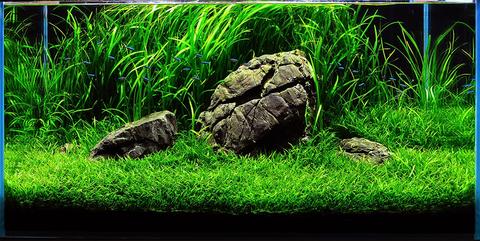
Carpeting plants are low-growing plants that grow rooted in the substrate. They are planted densely or allowed to spread across the bottom of the tank, typically in the foreground of the aquascape. These plants are generally small species, although some require regular trimming to stay low and neat. Dwarf hair grass and dwarf baby tears are popular examples of aquarium carpet plants.
Epiphytes
Epiphytes are special plants that do not require soil to grow. These plants may develop a strong root system, but they use these roots to anchor themselves to rocks and wood rather than the substrate. Java fern is a typical example of an epiphyte that can be glued, wedged, or tied to a solid object in a freshwater aquarium.
Stem Plants
Stem plants are fast-growing species that grow upwards into the water column or simply float in the water near the surface. These plants have weak root systems and extract the nutrients they need from the water around them. Popular stem plants include water wisteria, hornwort, and anacharis.
Mosses
Mosses are versatile plants that can be left to drift in the water column or attached to driftwood and rocks. It’s also possible to use moss as a carpet plant by sandwiching it between two layers of fine mesh and allowing it to grow outwards.
The fine structure of moss makes it a great place for fish to lay their eggs and for tiny fry and shrimp to hide away from predators.
Low Tech Vs. High Tech
Planted aquariums can be described as high or low-tech, and the difference really comes down to the type of equipment and maintenance that goes into the tank.
High-tech planted tanks use powerful lighting, injected carbon dioxide, and carefully planned fertilization doses and schedules to improve plant growth and create amazing underwater aquascapes.
Low-tech planted aquariums can be as simple as a regular fish tank, with standard lighting and little or no fertilizer. Most of the plants mentioned in this post will grow fine under low-tech conditions, although almost all of them will do even better in a high-tech setup.
Tissue Culture Vs Traditional
Many freshwater aquarium plant types are available for sale as tissue cultures that are grown under sterile laboratory conditions. While more expensive, tissue cultures are the best choice for aquarists concerned about introducing unwanted parasites, disease, or snails and their eggs into the aquarium.
30 Types Of Freshwater Aquarium Plants
Now that we have defined and explained the various classifications and terms for aquatic plants, let’s get into our list. For each of these plants, we will have the following listed for you:
- Scientific Name
- Common Name
- Placement
- Origin
- Skill Level
- Lighting
- Temperature Range
- Flow Rate
- CO2 Requirement
We have a video just for you below from our YouTube Channel. We go over more details in our blog post so please check out both. If you like our content, be sure to subscribe as we have no content uploaded every week!
Let’s jump in!
1. Java Fern
Java Fern is one of the easiest and hardiest live plants you can purchase
- Scientific Name: Microsorum pteropus
- Common Name: Java fern
- Placement: Midground (epiphyte)
- Origin: Southeast Asia
- Skill Level: Easy
- Lighting: Low – medium PAR, e.g. 40 – 150 μmols
- Temperature Range: 64 – 82 °F
- Flow Rate: Low – moderate
- CO2 Requirement: Recommended but not required
Java fern is an excellent plant for just about anyone with an aquarium! This Southeast Asian fern does not require high light, CO2 injection, or even substrate to grow. Its tough leaves are also resistant to damage from nibbling fish.
2. Anubias
Anubias is hardy and more fish and inverts won't bother it. An excellent choice for beginners!
- Scientific Name: Anubias spp.
- Common Name: Anubias
- Placement: Foreground/midground (epiphyte)
- Origin: Africa
- Skill Level: Easy
- Lighting: Low PAR, e.g. < 100 μmols
- Temperature Range: 72 – 82 °F
- Flow Rate: Low – moderate
- CO2 Requirement: Optional
Anubias is a group (genus) of low-light aquarium plants from the Araceae family. Like the Java Fern, these slow growers are epiphytes, which means they should be attached to your hardscape with glue or thread.
There are several species available in the hobby, ranging from the tiny nana petite which makes a great foreground plant, to larger species like A. barteri for the midground.
3. Bucephalandra
Bucephalandra is a slow-growing plant that's perfect for anyone looking to grow their first aquatic plant. They are great for attaching to hardscape
- Scientific Name: Bucephalandra spp.
- Common Name: Bucephalandra
- Placement: Foreground/midground (epiphyte)
- Origin: Indonesia
- Skill Level: Easy – moderate
- Lighting: Low – medium PAR, e.g. 40 – 100 μmols
- Temperature Range: 71 – 79 °F
- Flow Rate: Moderate
- CO2 Requirement: Recommended but not required
Bucephalandras are slow-growing epiphytes with beautiful colors. There are many species and varieties available, with many different leaf shapes, colors, and sizes. These plants are generally easy to grow and perfect for the midground hardscape of your aquarium.
4. Cryptocoryne
Parva is one of the smallest Cypt plants available in the aquarium trade. A slow grower
- Scientific Name: Cryptocoryne spp.
- Common Name: Crypts
- Placement: Foreground/ midground
- Origin: South & Southeast Asia
- Skill Level: Easy
- Lighting: Low – high PAR, e.g. 40 – 200 μmols
- Temperature Range: 68 – 82 °F
- Flow Rate: Low – moderate
- CO2 Requirement: Recommended but not required
Cryptocorynes, or crypts for short, are a large group of rosette plants that are mostly fairly similar in appearance. These plants grow rooted in the substrate and they are very easy to care for. Choose small species like C. parva for an interesting foreground or larger options like C. wendtii for the mid-ground.
5. Amazon Sword
A classic background aquarium plant. Grows large and will be a centerpiece in your aquarium
- Scientific Name: Echinodorus bleheri/ grisebachii
- Common Name: Amazon sword
- Placement: Background – midground
- Origin: Central & South America
- Skill Level: Easy
- Lighting: Low – high PAR, e.g. 40 – 250 μmols
- Temperature Range: 72 – 82 °F
- Flow Rate: Low-moderate
- CO2 Requirement: Recommended but not required
Amazon sword is an excellent background or midground plant for larger aquariums. This easy-going rosette plant has an upright growth form with large leaves – perfect for that lush tropical look.
These plants grow rooted in the ground, so you will need a fairly deep layer of substrate to develop healthy roots.
6. Java Moss
One of the easiest mosses to grow in an aquarium. Great for small fish and shrimp
- Scientific Name: Taxiphyllum barbieri
- Common Name: Java moss
- Placement: Foreground/hardscape/free floating
- Origin: Southeast Asia
- Skill Level: Easy-moderate
- Lighting: Low to high PAR, e.g. 10 – 200 μmols
- Temperature Range: 64 – 79 °F
- Flow Rate: Moderate
- CO2 Requirement: Recommended but not required
Java moss is an easy and versatile species for the planted aquarium. This species will grow unanchored in the aquarium, but most aquarists prefer to attach it to their hardscape. Left to grow wild, this plant creates excellent places for shrimp and fry to shelter, which makes it a great species for breeding projects.
7. Christmas Moss
A easy to care ground cover plant that is an excellent choice for shrimp tanks
- Scientific Name: Vesicularia montagnei
- Common Name: Christmas moss, Xmas moss
- Placement: Attached to hardscape
- Origin: Asia & Australia
- Skill Level: Moderate
- Lighting: Low – medium PAR, e.g. 40 – 150 μmols
- Temperature Range: 65 – 77 °F
- Flow Rate: Moderate
- CO2 Requirement: Recommended but not required
Christmas moss is a slower growing and more challenging moss species than Java moss, but with the right care, it can look truly amazing. It is named for its branching structure which makes it look like a miniature Christmas tree.
8. Ludwigia Natans Super Red
An easy to keep fast growing stem plant. One of the rare red plants that does not require CO2
- Scientific Name: Ludwigia palustris
- Common Name: Ludwigia natans ‘Super Red’, Water Purslane, Marsh Seedbox
- Placement: Background – midground
- Origin: Widespread
- Skill Level: Easy
- Lighting: Medium PAR, e.g. 150 μmols
- Temperature Range: 65 – 82 °F
- Flow Rate: Low – moderate
- CO2 Requirement: Recommended but not required
Ludwigia natans is a beautiful upright stem plant that can add vibrant red shades to your planted aquarium and it looks amazing when planted in dense grouping to create a fuller look. This is a very easy plant to grow and propagate, provided you can maintain stable water quality. This red plant can turn green under low light and CO2 conditions.
9. Water Wisteria
An easy to grow and great beginner floating plant to try!
- Scientific Name: Hygrophila difformis
- Common Name: Water Wisteria
- Placement: Background – midground
- Origin: India, Nepal, Bangladesh, & Bhutan
- Skill Level: Easy
- Lighting: Low – medium PAR, e.g. 40 – 150 μmols
- Temperature Range: 65 – 86 °F
- Flow Rate: Moderate
- CO2 Requirement: Recommended but not required
Water Wisteria is a fast-growing stem plant that can create a bushy green wall at the back of a planted aquarium or be used in a grouping as a feature in the midground of larger tanks.
This interesting plant has rounded leaves with a toothed margin when grown emersed but changes to spiky feathered foliage when grown completely submerged in an aquarium.
10. Ludwigia Repens
Buceplant offers both stem and tissue culture Ludwigia Repens at great prices. A great beginner red plant to try!
- Scientific Name: Ludwigia repens
- Common Name: Creeping primrose-willow
- Placement: Background – midground
- Origin: North America
- Skill Level: Easy – moderate
- Lighting: Medium PAR, e.g. 150 μmols
- Temperature Range: 72 – 82 °F
- Flow Rate: Low – moderate
- CO2 Requirement: Recommended but not required
Ludwigia Repens is stem plant that can show various shades from bright green to red or gold. This plant grows quickly and is easy to propagate from cuttings. It looks best when planted in a dense bunch, and is perfect for the background of planted aquariums.
11. Monte Carlo
Tissue culture plants are grown in labs and are completely pest free and have great shelf lives
- Scientific Name: Micranthemum spp.
- Common Name: Monte Carlo
- Placement: Foreground, carpet
- Origin: Argentina
- Skill Level: Easy – moderate
- Lighting: Medium – high PAR, e.g. 150 – 200+ μmols
- Temperature Range: 68 – 77 °F
- Flow Rate: Moderate
- CO2 Requirement: Recommended but not required
Micranthemum ‘Monte Carlo‘ is a small green spreading plant with delicate rounded leaves. It is one of the best carpet plants for the foreground of planted aquariums. This plant is easy to grow, but you will need high lighting and injected carbon dioxide for a dense, low carpet.
12. Dwarf Hairgrass
Dwarf hairgrass is an easy to grow carpet that is great for beginners. Purchase tissue culture plants to ensure pest free plants!
- Scientific Name: Eleocharis parvula
- Common Name: Dwarf hairgrass, dwarf spikerush
- Placement: Midground, foreground, carpet plant
- Origin: Widespread
- Skill Level: Easy – moderate
- Lighting: Low – high PAR, e.g. 75 – 200+ μmols
- Temperature Range: 50 – 85 °F
- Flow Rate: Moderate
- CO2 Requirement: Recommended but not required
Dwarf Hairgrass is one of the best carpet plants for planted aquariums because it can look just like a real lawn. It will grow at its best with decent light and CO2 injection, but this is a carpet plant that can also be used in low-tech setups. This plant will grow in moderate water flow, but it will need a few weeks of low flow to establish a healthy root system.
13. Floating Fern
A floating plant that tolerates cold water. Does best in low flow tanks
- Scientific Name: Salvinia natans
- Common Name: Floating fern, floating watermoss
- Placement: Floating plant
- Origin: Africa, Europe, & Asia
- Skill Level: Easy
- Lighting: Low – high PAR, e.g. 75 – 200+ μmols
- Temperature Range: °F
- Flow Rate: Low – moderate
- CO2 Requirement: No
The floating fern is an interesting floating plant with bright green, wavy leaves covered in hairs. It is an excellent plant for open-top display aquariums or fish tanks with shy species like African killifish.
Be aware that this fast-growing plant can multiply to cover up the surface of your aquarium, which can starve your other plants of the light they need to grow.
14. Red Root Floater
A great red floating plant that is easy to care for.
- Scientific Name: Phyllanthus fluitans
- Common Name: Red root floater, apple duckweed
- Placement: Floating plant
- Origin: Amazon River Basin, South America
- Skill Level: Easy
- Lighting: Low – high PAR, e.g. 75 – 200+ μmols
- Temperature Range: 70 – 82 °F
- Flow Rate: Low
- CO2 Requirement: No
The red root floater is an attractive green or pinkish floating plant with striking red roots that hang down into the water. This is an ideal plant for open aquariums where you can enjoy its colorful rounded leaves from above. If it’s happy in your aquarium, this plant might even produce small white flowers!
15. Subwassertang
A floating plant that is great for shrimp tanks.
- Scientific Name: Lomariopsis lineata
- Common Name: Subwassertang, susswassertang, Loma fern
- Placement: Midground
- Origin: Southeast Asia
- Skill Level: Easy
- Lighting: Low – medium PAR, e.g. 75 – 150 μmols
- Temperature Range: 68 – 75 °F
- Flow Rate: Moderate
- CO2 Requirement: Recommended but not required
The Subwassertang is a strange, seaweed-like moss that can be attached to your hardscape or left to drift around naturally in the tank. It is a great plant for fish or shrimp breeders who want to provide a healthy natural hiding place for young fry.
16. Dwarf Water Lettuce
A popular floating plant that is used in ponds and aquariums!
- Scientific Name: Pistia stratiotes
- Common Name: Dwarf water lettuce, water cabbage, water lettuce, Nile cabbage
- Placement: Floating plant
- Origin: Uncertain. Africa or South America
- Skill Level: Easy – moderate
- Lighting: Low to high PAR e.g. 75 – 200+ μmols
- Temperature Range: 66 – 80 °F
- Flow Rate: Low – moderate
- CO2 Requirement: No
Dwarf water lettuce is a beautiful floating plant with pale green leaves and roots. It has low light requirements and will thrive in most aquariums, although this plant can grow pretty large. Unfortunately, water lettuce has a reputation for becoming invasive and is illegal in many states in the US, so check up on your local laws before ordering this attractive plant.
17. Hornwort
A tall and easy to grow freshwater plant. One of the least demanding background plants available
- Scientific Name: Ceratophyllum demersum
- Common Name: Hornwort
- Placement: Background – midground, floating plant
- Origin: Widespread
- Skill Level: Easy
- Lighting: Medium – high, e.g. 150 – 200+ μmols
- Temperature Range: 50 – 77 °F
- Flow Rate: Low – moderate
- CO2 Requirement: No
Hornwort is a fast-growing stem plant with fine, needle-like leaves. This plant does not send roots down into the substrate, so you can leave it to float in the water column or anchor it in place with plant weights.
Hornwort is super-easy to grow and needs no special care like high lighting or CO2. These plants are also great for soaking up extra nitrates in the water and reducing the amount of maintenance you need to do.
18. Vallisneria
One of the easiest background placement aquarium plants that can be kept. Provides excellent shelter for fish
- Scientific Name: Vallisneria spp.
- Common Name: Vallisneria, tape grass, eel grass
- Placement: Background
- Origin: Various
- Skill Level: Easy – moderate
- Lighting: Medium – high PAR, e.g. 150 – 200+ μmols
- Temperature Range: 59 – 86 °F
- Flow Rate: Moderate – high
- CO2 Requirement: Recommended but not required
Vallisneria is a group of grass-like plants that can vary from about 8 inches to nearly 2 feet in height. These plants spread by sending a runner along the surface of the substrate and sending down roots.
Vallisnerias are ideal for the background of your aquascape and they look amazing when left to grow up to the surface and curve over, especially when there is good water movement in the tank.
19. Najas Indica (Guppy Grass)
Guppy Grass is a great plant for breeders and beginners. It is stress free, grows fast, and helps remove nutrients in an aquarium
- Scientific Name: Najas indica
- Common Name: Guppy grass
- Placement: Background, midground, floating plant
- Origin: Asia
- Skill Level: Easy
- Lighting: Low – medium PAR, e.g. 75 – 150 μmols
- Temperature Range: 71 – 86 °F
- Flow Rate: Low
- CO2 Requirement: No
Guppy grass is the perfect plant for aquarists who want something that will grow fast with minimal effort. This stem plant is ideal for breeding projects because it provides excellent hiding places for baby shrimp and fry. Guppy grass does not need substrate either, so you can even grow this plant in a bare aquarium.
20. Pearl Weed
A carpet growing plant that is fast growing and will do well in low light
- Scientific Name: Hemianthus micranthemoides
- Common Name: Pearl weed
- Placement: Midground, foreground, carpet
- Origin: United States of America
- Skill Level: Easy
- Lighting: Medium PAR, e.g. 150 μmols
- Temperature Range: 66 – 82 °F
- Flow Rate: Moderate
- CO2 Requirement: Recommended but not required
Pearl weed is a versatile species that can be grown as an upright stem plant or trimmed regularly to encourage a low carpet. It will grow fast in a fish tank, especially if provided with increased CO2 levels and high lighting. However, this low-maintenance plant can also be left to grow to its full size at the middle and back of smaller aquariums.
21. Anacharis
Excellent as a food source and sucks up nutrients in an aquarium. One of the easiest freshwater plants to care for
- Scientific Name: Egeria densa
- Common Name: Anacharis, elodea, Brazilian waterweed
- Placement: Background, floating
- Origin: South America
- Skill Level: Easy
- Lighting: Low – medium PAR, e.g. 75 – 150 μmols
- Temperature Range: 61 – 82 °F
- Flow Rate: Low
- CO2 Requirement: No
Anacharis is a large, fast-growing plant that even beginners can grow. This versatile plant can be left to float freely in the aquarium or anchored in the substrate.
Anacharis grows fast and large, so this is not the best choice for a nano tank. It has the potential to be highly invasive in local waterways, so always dispose of your trimmings responsibly
22. Nymphaea Tiger Lotus
The Nymphaea Tiger Lotus is a beautiful flowering plant perfect for any aquarium. This plant is easy to care for and will thrive in most aquariums.
- Scientific Name: Nymphaea zenkeri
- Common Name: Red tiger lotus
- Placement: Midground
- Origin: Africa
- Skill Level: Easy
- Lighting: Medium to high PAR, e.g. 150 – 200+ μmols
- Temperature Range: 72 – 86 °F
- Flow Rate: Low
- CO2 Requirement: No
The red tiger lotus is a unique plant that will add color and interest to your freshwater tank. This African plant grows from a bulb and sends colorful leaves up to the surface. These plants even produce beautiful flowers if they receive enough light.
23. Amazon Frogbit
A fast growing floating plant. Known to be invasive in North America. Handle with care!
- Scientific Name: Limnobium laevigatum
- Common Name: Amazon Frogbit, South American/ West Indian spongeplant
- Placement: Floating plant
- Origin: Central & South America
- Skill Level: Easy
- Lighting: Medium – high PAR, e.g. 150+ μmols
- Temperature Range: 64 – 86 °F
- Flow Rate: Low
- CO2 Requirement: No
Amazon frogbit is a beautiful floating plant for freshwater aquariums. It has smooth circular green leaves that float at the surface and interesting pale green roots that hang down into the water column. These plants shade the water and create the perfect environment for fish and shrimp to explore.
24. Dwarf Sagittaria
A hardy and easy to grow ground cover aquarium plant. Does not need CO2 to thrive
- Scientific Name: Sagittaria subulata
- Common Name: Dwarf sag, narrow-leaf sagittaria, awl-leaf arrowhead
- Placement: Foreground, midground
- Origin: North & South America
- Skill Level: Easy
- Lighting: Medium PAR, e.g. 150 μmols
- Temperature Range: 64 – 79°F
- Flow Rate: Moderate
- CO2 Requirement: Recommended but not required
Dwarf sagittaria is one of the best freshwater aquarium plants for the foreground or midground. It does not have special growing requirements but is most likely to create a dense, low carpet if grown under high light and with injected CO2. This plant grows rooted in the substrate and will perform best in a good quality aquasoil or fertilized substrate.
25. Water Sprite
Readily available and easy to grow. This fast growing plant will soak up nutrients and thrive in low light
- Scientific Name: Ceratopteris thalictroides
- Common Name: Water sprite, Indian water fern
- Placement: Background, midground
- Origin: Asia
- Skill Level: Easy
- Lighting: Medium – high PAR, e.g. 150 – 200+ μmols
- Temperature Range: 72 – 82 °F
- Flow Rate: Low
- CO2 Requirement: Recommended but not required
Water sprite is a fast-growing aquatic fern with fine, intricate leaves. This plant grows quickly and can reach over a foot tall, making it a great choice for the background of medium-sized aquariums. Water sprite can be left to float in the water column or be attached to the substrate with weights, but it does not develop a strong root system.
26. Bacopa Caroliniana
Bacopa Caroliniana Red is a well-recognized aquatic stem plant that is both easy to grow and beautiful in an aquascape.
- Scientific Name: Bacopa caroliniana
- Common Name: Water hyssop, giant red bacopa, lemon bacopa
- Placement: Background, midground
- Origin: United States of America
- Skill Level: Easy
- Lighting: Medium – high PAR, e.g. 150 – 200+ μmols
- Temperature Range: 68 – 84 °F
- Flow Rate: Low – moderate
- CO2 Requirement: Recommended but not required
Lemon bacopa is a slow-growing, upright stem plant that can be grown in the background or midground of your aquarium. This lemon-scented plant grows rooted in the substrate but is very easy to propagate by cuttings. It does not need high CO2 but will grow best with good light.
27. Giant Ambulia
- Scientific Name: Limnophila aquatica
- Common Name: Giant ambulia
- Placement: Background
- Origin: South & Southeast Asia
- Skill Level: Moderate
- Lighting: Medium – high PAR, e.g. 150 – 200+ μmols
- Temperature Range: 59 – 86 °F
- Flow Rate: Low – moderate
- CO2 Requirement: Recommended
Giant ambulia (video source) is an impressive background plant with dense fine foliage. It has an upright growth form but will spread horizontally when grown under ideal conditions. This plant will grow best with good nutrient levels and increased carbon dioxide.
28. Echinodorus muricatus
With its short stems and long, bright green leaves, this plant is sure to add some beautiful coverage to your background or mid-ground area.
- Scientific Name: Echinodorus sp.
- Common Name: Radican sword
- Placement: Background, midground
- Origin: South America
- Skill Level: Easy
- Lighting: Medium PAR, e.g. 150 μmols
- Temperature Range: 59 – 86 °F
- Flow Rate: Low – moderate
- CO2 Requirement: Recommended but not required
Echinodorus sp. ‘muricatus’ is an attractive green rosette plant for medium to large aquariums. This all-green plant grows rooted in the substrate of the freshwater tank and does not have any special requirements. However, like most species, it will grow best under quality lighting and with sufficient access to carbon dioxide.
29. Pennywort
A floating plant that can also grow rooted. Easy to grow and maintain
- Scientific Name: Hydrocotyle leucocephala
- Common Name: Brazilian pennywort
- Placement: Midground, floating plant
- Origin: South America
- Skill Level: Easy
- Lighting: Medium PAR, e.g. 150 μmols
- Temperature Range: 68 – 82 °F
- Flow Rate: Low – moderate
- CO2 Requirement: No
Brazilian pennywort is a versatile and easy plant suitable for just about any freshwater tank. It can be grown rooted in the substrate or allowed to float on the surface and will thrive in a variety of temperatures and water parameters. This plant grows fast and is easy to propagate in the home aquarium.
30. Rotala Rotundifolia
An easy to grow stem plant with red colors. Easy to trim and propagate
- Scientific Name: Rotala rotundifolia
- Common Name: Dwarf rotala
- Placement: Background – midground
- Origin: Asia
- Skill Level: Easy
- Lighting: Medium – high PAR, e.g. 150 – 200+ μmols
- Temperature Range: 68 – 82 °F
- Flow Rate: Low – moderate
- CO2 Requirement: Recommended but not required
Dwarf rotala is one of the most popular freshwater aquarium plants in the hobby and is available in many varieties and colors. This Asian stem plant grows quickly under good conditions and forms a lovely background or midground feature if grown in tight bunches.
FAQs
Are live plants good for a freshwater aquarium?
Live aquarium plants are excellent for the health of the fish and other animals in your freshwater aquarium. Plants help to oxygenate the water, soak up excess nutrients, and provide food sources for fish fry. Of course, plants look great too and a tank full of healthy live plants can be a real showstopper!
How do I keep my freshwater aquarium plants healthy?
Like fish and other freshwater tank inhabitants, live plants have certain water parameter preferences and requirements that are specific to each species. However, all live aquarium plants need a regular daylight period, sufficient nutrients, and stable water conditions to thrive.
Which live plant is best for an aquarium?
There are so many amazing freshwater aquarium plants available in the hobby that choosing just one species is impossible! Fast-growing stem plants like guppy grass are usually the best choice for fishkeepers who want a lot of green growth and improved water quality. However, slow- growing epiphytes live Java ferns are better for low-maintenance display tanks.
What helps plants grow in an aquarium?
Providing regular fertilization, access to quality lighting in the correct spectrum for plant growth, and increased carbon dioxide levels are the best ways to increase plant health and growth in a freshwater aquarium.
How long do real aquarium plants last?
Live aquarium plants can live for many years if cared for correctly. Most aquarium plants are easy to propagate in the home aquarium, so live plants are usually great value for money!
Do live aquarium plants need heat?
Each plant has slightly different temperature needs depending on which part of the world it comes from. Most of the popular aquarium plants thrive in regular tropical fish tank temperatures, but some struggle in temperatures above about 80 °F.
Final Thoughts
Thanks for stopping by and reading through this list of 30 amazing freshwater aquarium plants! If you’re thinking of adding a few live plants to your tank then I highly recommend just going ahead and getting started. Trust me – you won’t look back!
Do you keep live plants in your aquarium? Share your favorite species in the comments below!
- About the Author
- Latest Posts
I’m thrilled that you found Aquarium Store Depot! Here you’ll find information on fish, aquariums, and all things aquatics related. I’m a hobbyist (being doing this since I was 11) and here to help other hobbyists thrive with their aquariums! I adhere to a high quality Editorial Process and Review products with real life field usage and practical analysis.

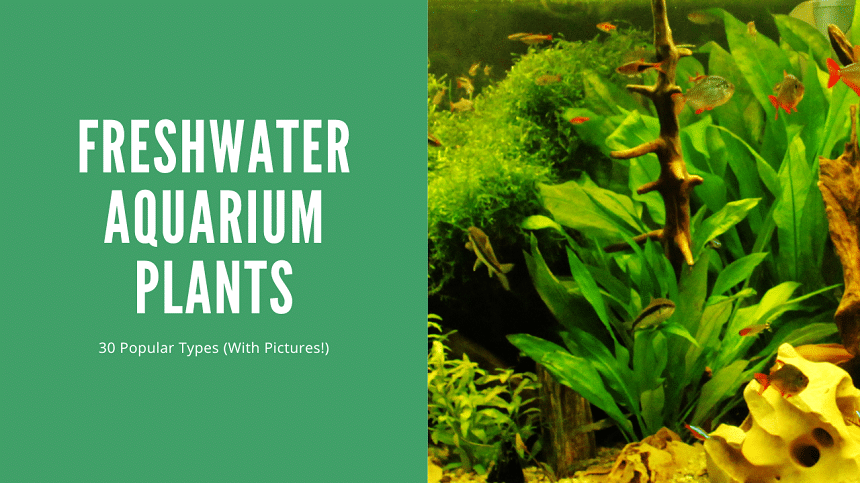
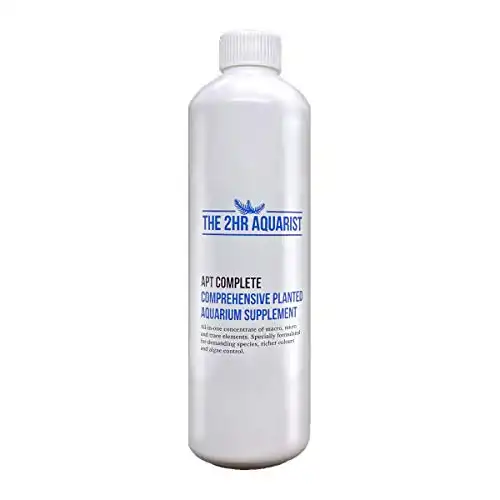
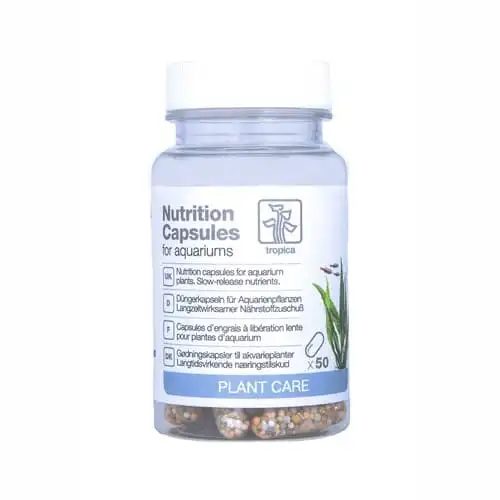
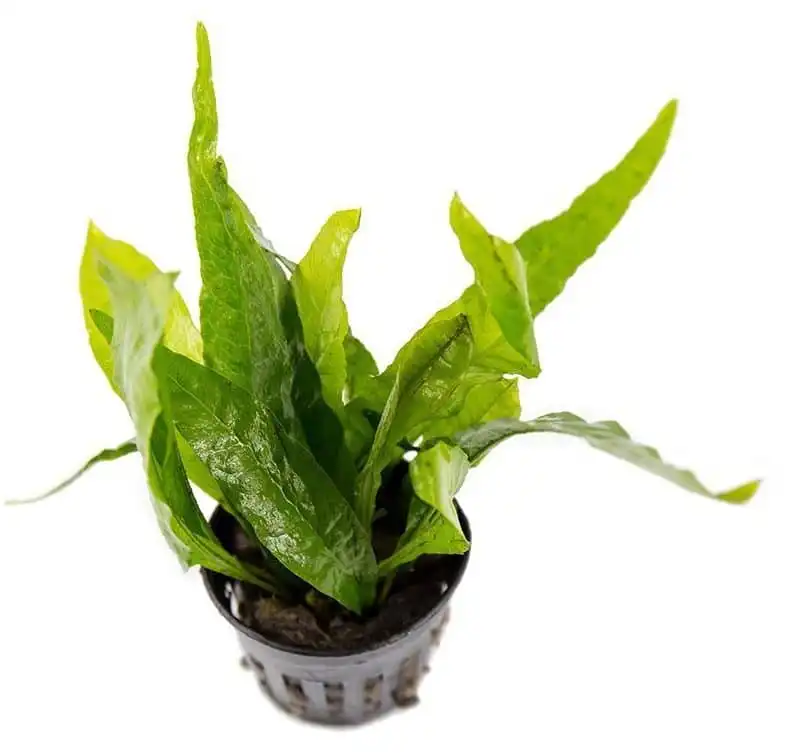

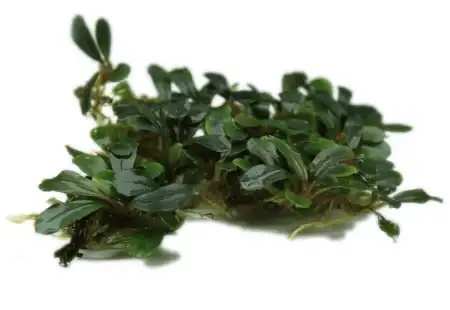
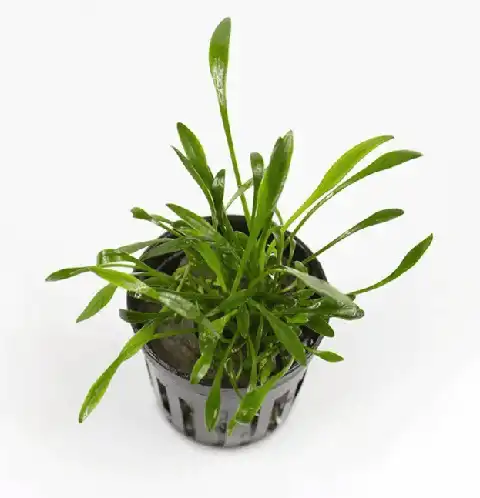
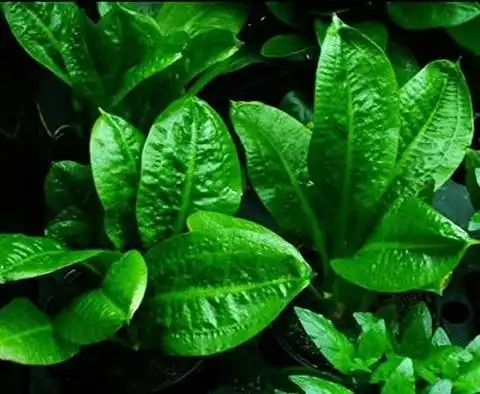
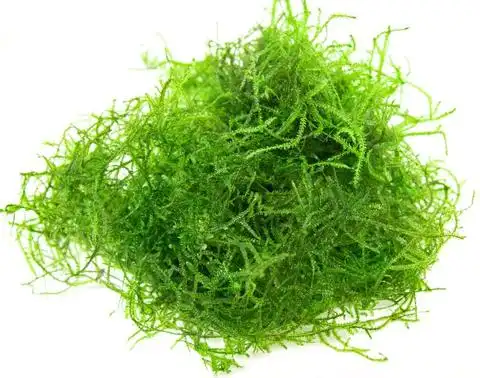



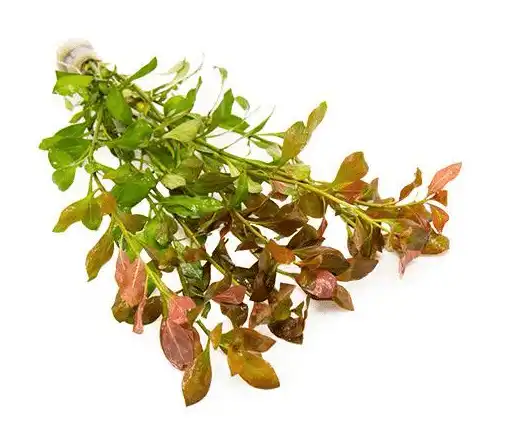
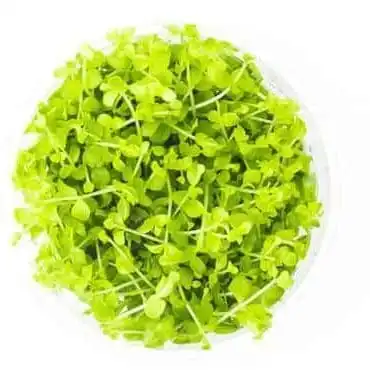

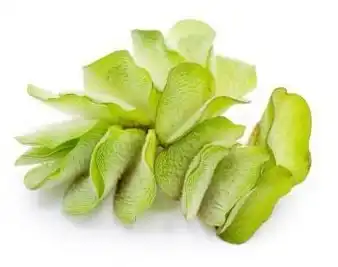

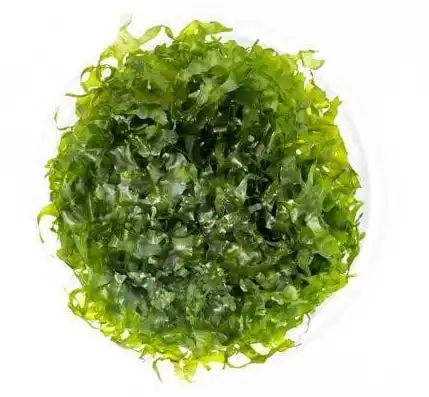


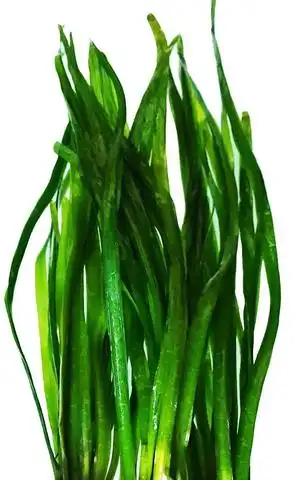

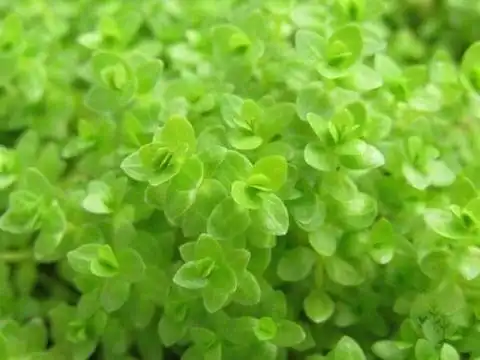
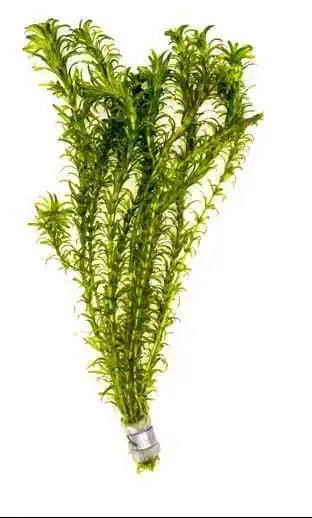
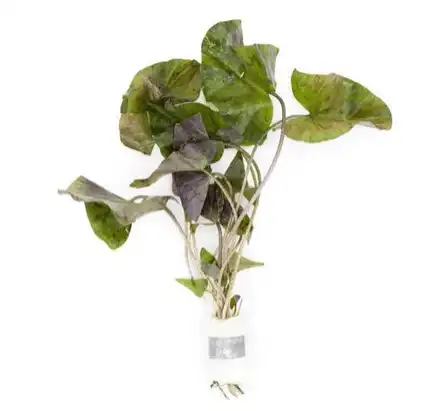
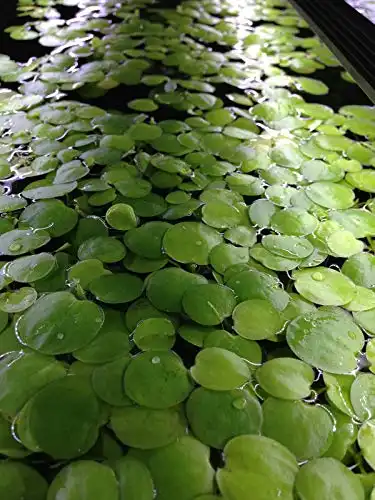
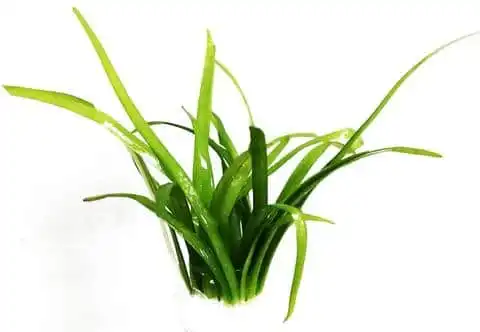
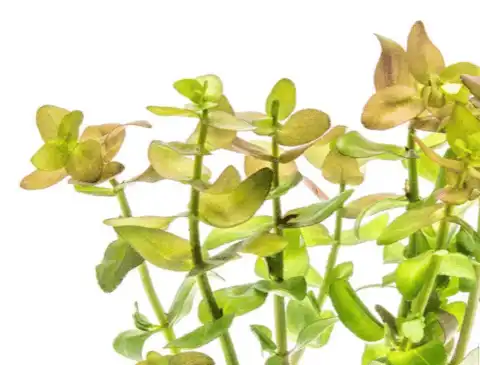
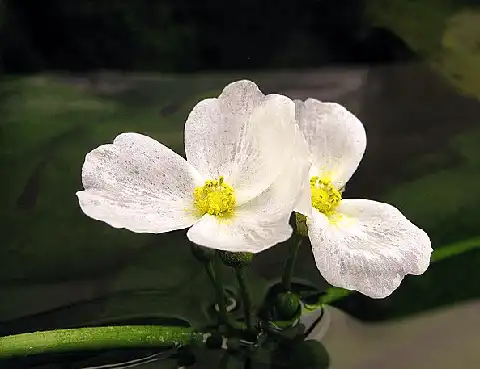
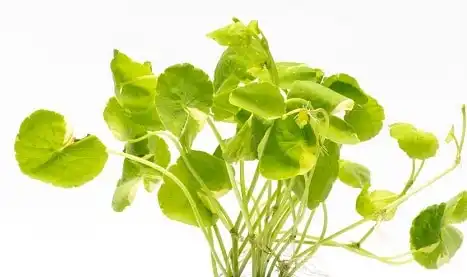
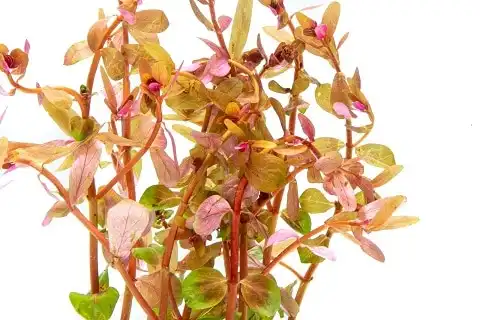




Hi I have a stupid question. I’m just beginning. Do I leave my plants in the wrapped medium I purchased it in? I don’t know what I’ve bought or if they need in substrate or floating. I guess I better go back to feeders. Very little choice there. Small town only place. 🤦♀️Thank you.
You should unwrap them. Do you know what plant you got? ID’ing them would help with knowing if they can be in the substrate or like to float.